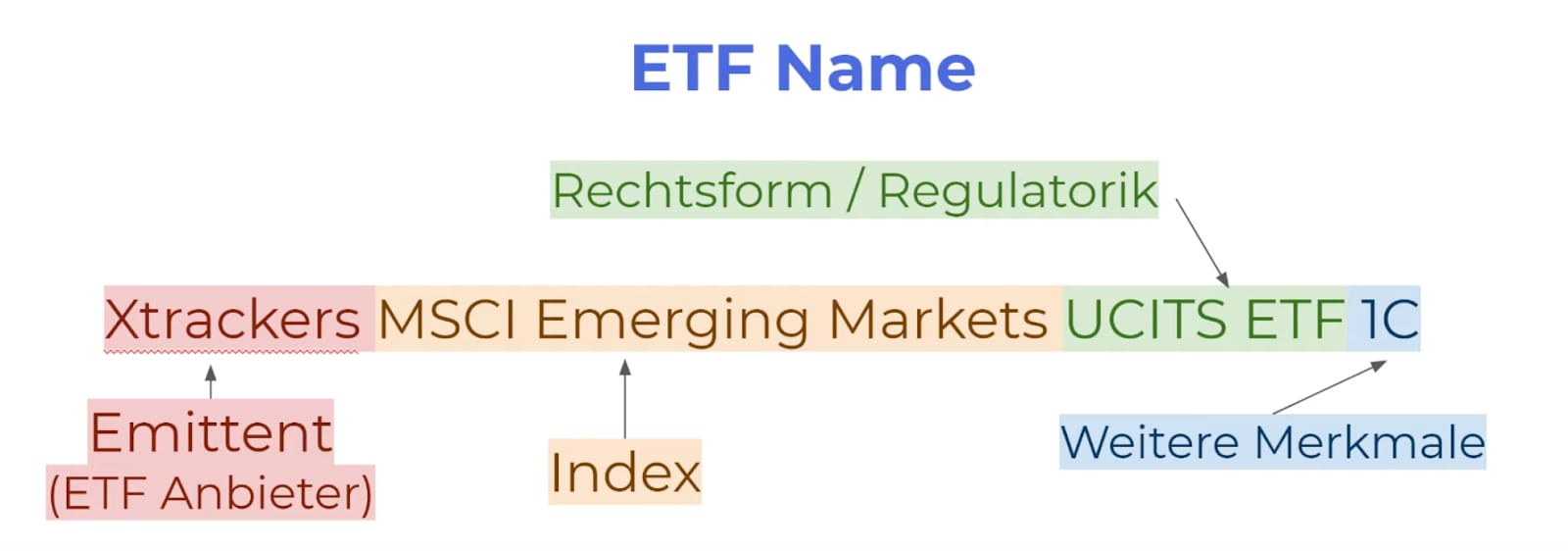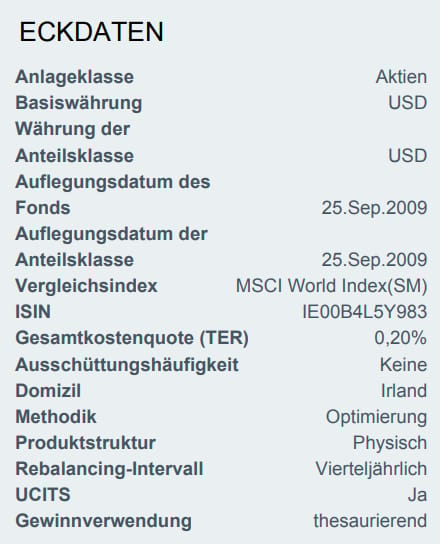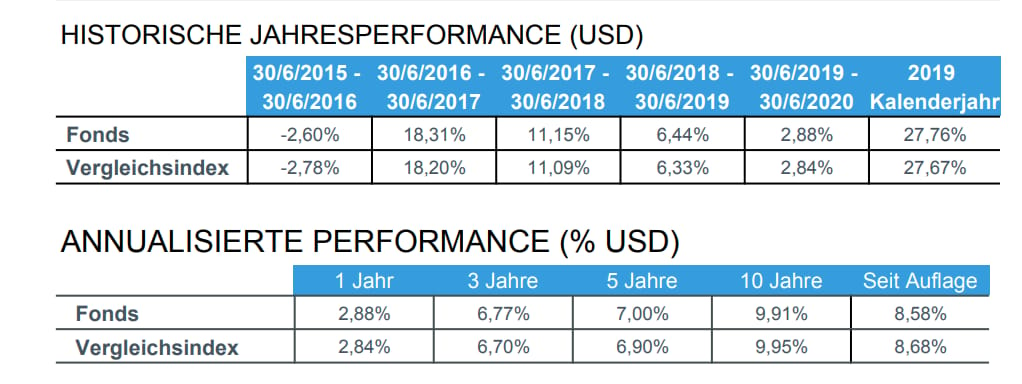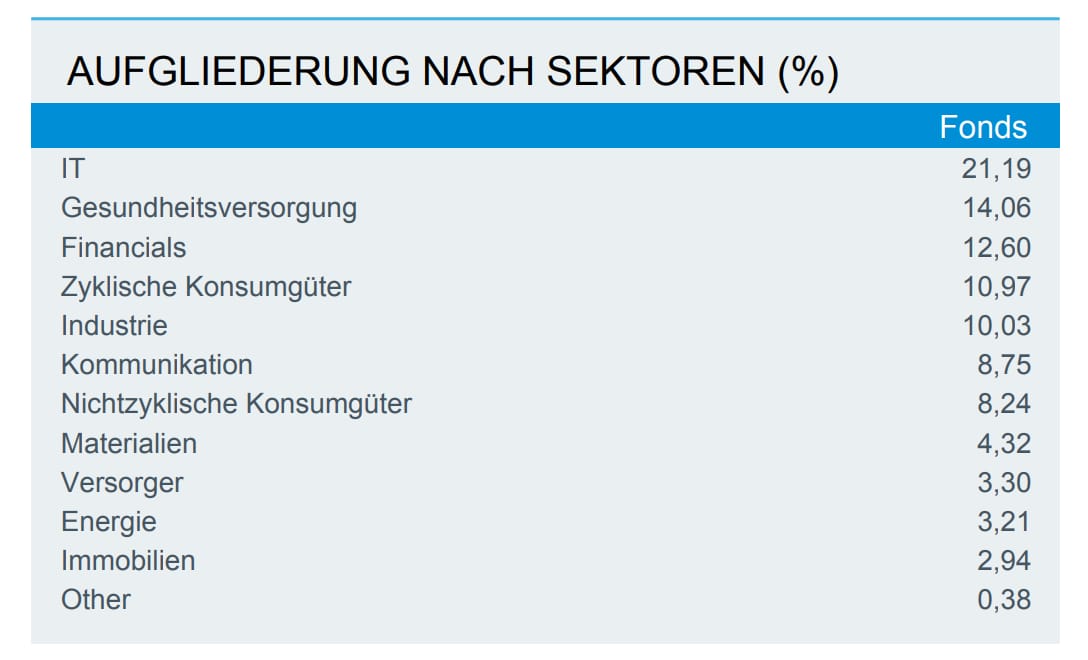How to Read ETF Factsheet
💡Take Away
- All information about an ETF can be checked in the corresponding factsheet.
- Each ETF carries a unique twelve-digit ISIN (International Securities Identification Number).
- Every security in Germany also carries a six-digit WKN (Securities Identification Number).
- In the factsheet, you can find the most important product information, such as: distribution type and frequency, replication method, costs (TER), and the ETF provider.
There are some mandatory documents that you can find on the profile page of each ETF. However, the factsheet typically provides investors with the best overview. On 1-2 pages, you will learn, among other things, how the ETF is composed, what costs are involved, and more about the characteristics of the ETF.
ETF Name
Each ETF has a unique name for distinction. The naming typically looks like this—before even looking at the factsheet, you can derive the following information: the ETF provider, the index the ETF tracks, the legal structure, and other characteristics (e.g., the replication method or distribution type).
Example:

- Trackers: ETF issuer (ETF provider)
- MSCI Emerging Market: The index this ETF is designed to track
- UCITS: Undertakings for Collective Investment in Transferable Securities, an EU regulatory framework ensuring that the fund meets certain standards of investor protection, making it available for sale across Europe
- 1C
- 1: typically indicates the currency denomination (e.g., USD or EUR)
- C typically indicates that the ETF is a Accumulating (Accumulation) fund, meaning that any income or dividends earned by the fund are reinvested rather than paid out to investors.
WKN and ISIN
Each security in Germany carries a WKN (Wertpapierkennnummer) or security identification number. This is a six-character combination of numbers and letters that uniquely identifies the security.
The ISIN (International Securities Identification Number) has 12 characters and is used internationally.
- National identification numbers like the WKN can usually be converted into an ISIN.
- An example of an ISIN is DE 000N252882. The “DE” is the country code, followed by the NSIN (National Securities Identifying Number).
Factsheet: The Most Important Information at a Glance
Let’s take a look at an example ETF factsheet: the iShares Core MSCI World UCITS ETF by BlackRock. Typically highlighted in color, the first page of the factsheet contains the key details of the ETF—the most important information you need to know:

Asset class (Anlageklasse): in this case, equities (as the MSCI World in the name indicates that the MSCI World Index is being tracked)
- With ETFs, you can track different asset classes, such as: equities, bonds, real estate, and commodities.
Share classes (Anteilsklasse): Funds can have different share classes. These are shares in the same fund.
- In this example, both the investment and share class are denominated in US dollars, so no currency conversion fee arises.
- Although different share classes have the same value in an ETF, they may differ in aspects such as profit distribution or the currency used.
Fund’s Inception date (Auflegungsdatum des Fonds): shows when the ETF was launched
- In this example, it has been available since September 25, 2009
- This is important information because with younger ETFs, you should pay close attention to the assets held and the number of shares issued.
- Generally, the risk of the ETF provider going bankrupt is lower with more established funds.
Benchmark index (Vergleichsindex): indicates which index the ETF tracks. In this case, the MSCI world
Total Expense Ratio (TER): The most important metric for the costs of an ETF. It indicates all the costs that the ETF provider deducts from the fund’s assets to replicate the index.
Methodology (Methodik): Indicates the replication method the ETF uses to track the index In this case, optimized sampling.
Rebalancing interval (Rebalancing-Intervall): Indicates how often the ETF provider adjusts the composition of the ETF to match the index
- In this example, the provider rebalances the composition four times a year, as needed, to ensure the ETF closely tracks the index.
Distribution method (Gewinnverwendung): An important criterion when selecting ETFs that align with your strategy.
- In this example, “Accumulating” (thesaurierend) means that the ETF directly reinvests the dividend earnings.
A little further down in the factsheet, you’ll find an overview of the performance, i.e., the ETF’s historical returns.

- The first table shows the annual return for the years 2015 to 2019 and compares it with the return of the benchmark index that the ETF tracks (MSCI World in this case).
- The second table, which shows the annualized performance, is more relevant for long-term investments
- Here, you can see how much return you would have made each year if you had bought and held the ETF for X years.
- it compares the performance with the return of the benchmark index. You will see that the deviations are consistently below or exactly at 0.11% (tracking difference).
What values are included in my ETF?
Before investing money in an ETF, it is always advisable to check which specific assets it consists of. You can find this information in the factsheet as well.
Example
In our example ETF, which tracks the MSCI World, there are more than 1,600 individual companies included, spread across many countries and sectors. In the factsheet, you will find an overview of the sectors and regions in which your ETF is invested.
Breakdown by sectors

Breakdown by regions

You can see that the MSCI World UCITS ETF from BlackRock has a strong focus on the USA, followed by Japan, and then European countries. In terms of sectors, IT is the largest weight in the example ETF. Health care, financials, and cyclical consumer goods (i.e., things that aren’t essential for survival) are also at the top.